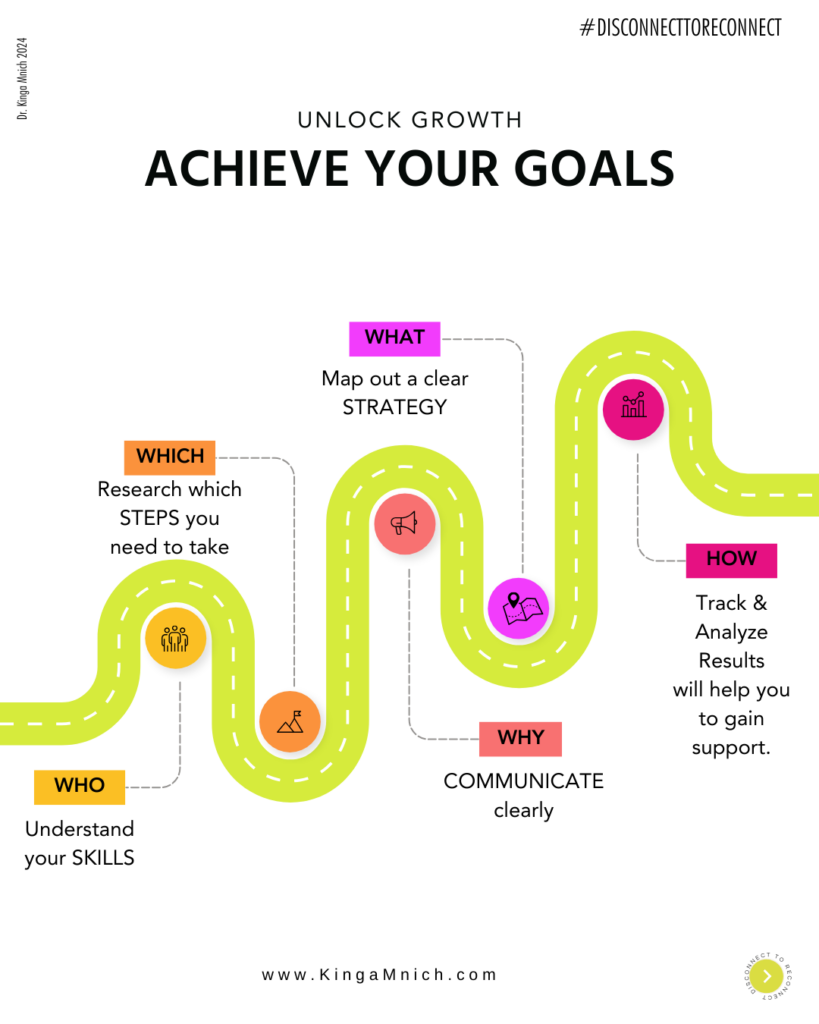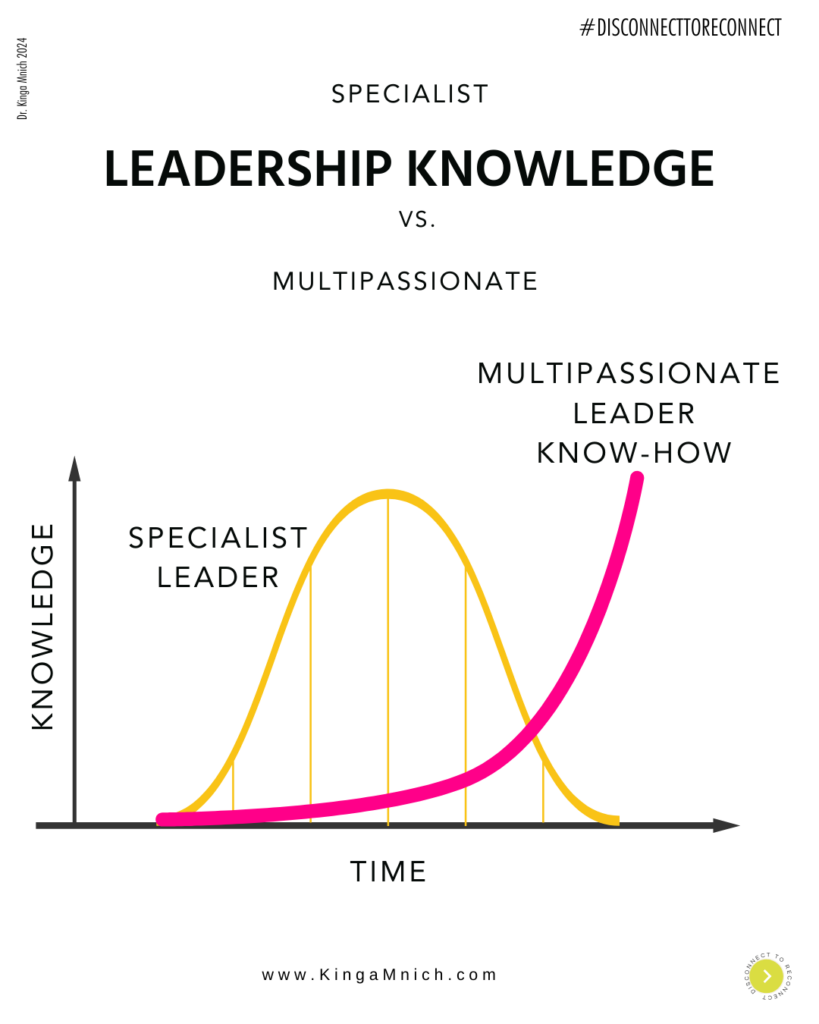Seeing what happens when we are finally honest about our weaknesses is incredible. At least, that has been the case for me.
I have always had difficulties focusing on only one thing. I am a generalist, a multi-passionate person, and an infinite learner. When people told me I needed to focus on one thing, I dismissed their words because I didn’t want to be placed in a box or carry a label. I also didn’t want to be bored. Generally, I was and still am good at everything, but I don’t excel at most things except problem-solving and understanding people.
It took me years to understand what I excel at because I have been a generalist, or, as I prefer to call myself, a multi-passionate person. Nothing is wrong with that, but finding one’s place is more difficult in a world that fosters specialization and niching down. The exciting thing is that multi-passionate people in leadership positions excel in their roles because of their ability to take expansive approaches to problem-solving.
How do I step into leadership positions?
The real challenge for multi-passionate leaders is not how to be leaders but how to get there. It is difficult for others to understand your strengths and how to label you. If you are being honest, you might be grappling with the same obstacle.
I have some good news: You don’t need to be a specialist to make the world understand what you do. Instead, you need to be able to focus on your vision and map out a strategy with clear stepping stones for getting there.
What is the difference between being focused and focusing only on one thing?
There is a difference between being focused and focusing only on one thing. Being focused means knowing where you are going, having a strategy, and knowing the individual steps. These generally require various skills that you have accumulated over the years. Niching down and focusing on one thing is, well, exactly what it sounds like. How do you create a strategy that allows you to be focused?
Developing a strategy requires the following from you:
– You know when to say no to an opportunity.
– You don’t get distracted by shiny objects.
– You know your strengths and weaknesses in and out.
– You are aware of your thoughts, feelings, triggers, and environment.
– You know what the next step (or even two steps) is.
You can focus all day long on one thing, for example, developing a new interface for the company you are working for, and you might become an expert in this, but without a vision and understanding of your purpose, all your work and efforts might leave you feeling empty.
Steps to create a strategy that enables you to turn your vision into reality.
How to create a strategy that aligns with your vision and purpose?
Understanding your vision and purpose allows you, as a multi-passionate person, to verbalize what you are currently working on and what you are specializing in at that moment. For example:
Let’s say your vision is: ‘To create a sustainable economy that fosters environmentally and socially friendly businesses.’
Your beliefs, values, and interests are economic growth, sustainability, cultural diversity, and collaboration. You are deeply interested in the economic market but tired of how it creates poverty, focuses only on a small group of people, and supports companies that exploit developing countries. You believe that equality and sustainability can be achieved through market development.

Skills needed:
- Understanding of emerging technologies
- Business development
- Background in economic development
- Asset management
- Ability to build communities and a following
- Knowing how to get funding
- Etc.
Vision Achievement Strategy Step 1:
Understand which skills are needed.
The next phase involves understanding which steps you need to take to achieve your vision and who you need to contact and bring into your network to understand better what you need to do.
Planning out these steps is crucial to staying focused on the path and staying connected to your desire to be part of something meaningful. Research shows that ‘Lives may be experienced as meaningful when they are felt to have significance beyond the trivial or momentary, to have purpose, or to have a coherence that transcends chaos’ (Frank Martela & Michael F. Steger 2016).
By mapping your path, you are creating coherence in the chaos that we experience daily. And who is better equipped to tackle life chaos than a multi-passionate person who has the ability to switch between skills seamlessly and calmly?
One last thing: German psychologist Peter Gollwitzer has shown in his research that you are 2x to 3x more likely to stick to your goals if you create a specific plan for when, where, and how you will perform the task. In one study, participants were asked to fill out this sentence: “During the next week, I will partake in at least 20 minutes of meditation on [DAY] at [TIME OF DAY] at/in [PLACE].”
Edit this sentence according to your tasks and goals.
Vision Achievement Strategy Step 2:
Understand which steps you need to take.
To understand the next steps, you should speak to people who have done similar things before, who have demonstrated a willingness to tackle the unknown, and who are willing to share their strategies for getting closer to your life goal.
Once you clearly know your vision and start mapping out the path and stepping stones to get there, you can start creating labels that help you communicate who you are and what you do.
Focus means always keeping sight of the bigger goal—aka your vision. It doesn’t mean putting yourself in a box, but it does mean being able to communicate clearly.
Remember: Communication Rule No.1: It is not important what you communicate. It is important what the other person understands.
Clearly communicating what you are working on enables you to ask for help, build a community and support system, and open doors.
Multi-passionate people like you engage in various tasks, including thinking creatively and having multiple skills and interests that enable you to see new paths and generate ideas across fields. However, when you get too passionate about something, the brain might just go into overdrive and move you away from what is at hand. Focus on sharing your vision, not your skills and everything you are currently exploring. What do you aim to achieve?
Vision Achievement Strategy Step 3:
Clear communication.
One thing that most multi-passionate people don’t lack is enthusiasm, though we sometimes lack the stamina to keep on going. Generally, this stems from a lack of understanding of the next step.
In positive psychology, a meaningful life stems from having a purpose, significance, fulfillment, and life satisfaction. According to research, a meaningful life is a life that has a “sense of core goals, direction in life, and enthusiasm regarding the future (George & Park, 2013, p. 371)
Reconnecting with your vision, setting a strategy, and understanding the individual steps you need to take to reach your goal will make you more productive and increase your chances of success, but it will also, foremost, create more life satisfaction.
Vision Achievement Strategy Step 4:
Creating infinite motivation and inspiration.

How Combining Multiple Passions Can Unlock New Opportunities and Drive Success
When you fully embrace your passions, skills, and interests in your leadership role, you gain an advantage by seeing the world from unique perspectives. Specialists approach a problem by niching down, making it smaller, while multi-passionate leaders take an expansive approach. We want to see the whole picture.
Helps you to clearly and confidently communicate what you are working on, how you need support while being authentic.
Literature:
Fuhrer, J. and Cova, F. (2022) ‘What makes a life meaningful? Folk intuitions about the content and shape of meaningful lives’, Philosophical Psychology, 36(3), pp. 477–509. doi: 10.1080/09515089.2022.2046262.
George, L. S., & Park, C. L. (2013). Are meaning and purpose distinct? An examination of correlates and predictors. The Journal of Positive Psychology, 8(5), 365–375. https://doi.org/10.1080/17439760.2013.805801
Gollwitzer, P. M. (1999). Implementation intentions: Strong effects of simple plans. American Psychologist, 54(7), 493–503
Martela, F. and Steger, M. F. (2016) ‘The three meanings of meaning in life: Distinguishing coherence, purpose, and significance’, The Journal of Positive Psychology, 11(5), pp. 531–545. doi: 10.1080/17439760.2015.1137623.












